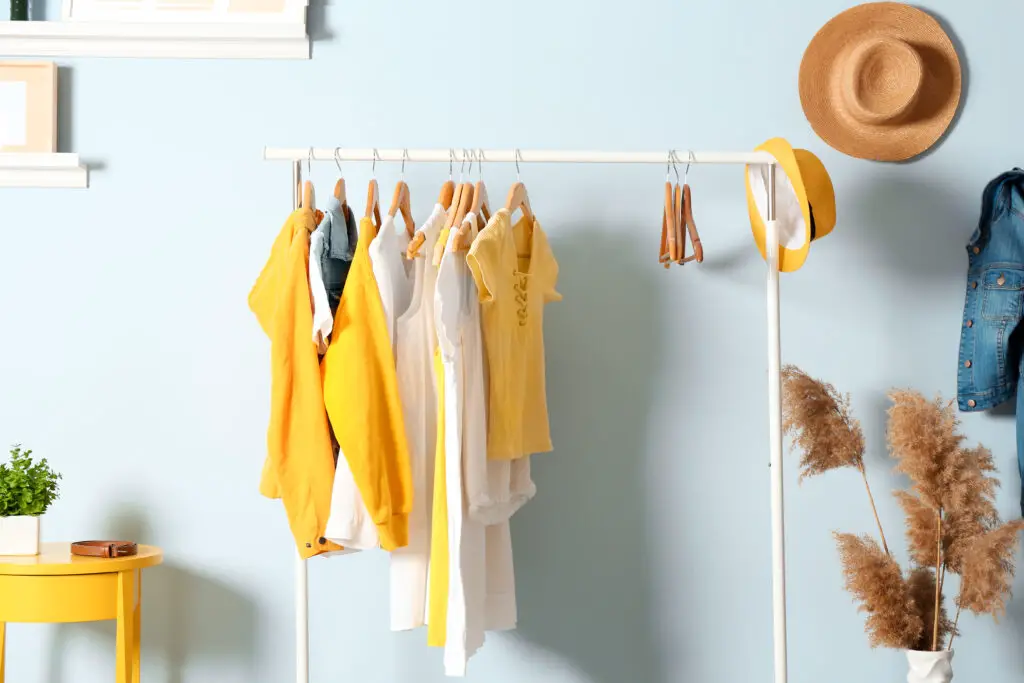
Whether you’re working to an existing pattern or designing a new one, understanding how fabric hangs will make you better able to translate between the pattern and the finished garment. To choose the right fabric for any pattern, you need to be able to picture it in your head and take into account the way it will move. This will help you to avoid making expensive mistakes, and will guarantee better results.
Fabric Weight
The first thing to consider when choosing fabric to suit your pattern is its weight. Often this is easy to determine simply by picking it up, but if you’re choosing between swatches of relatively light fabric you may need to use kitchen scales to identify subtle differences.
Weighty fabric tends to hang straight down and is unsuitable for clothes that need to billow or flare in order to look good. Its advantage is that it’s generally stronger and more durable, and it’s easier to control the shapes it will take, making it a better choice for heavily tailored garments.
Really lightweight fabric, on the other hand, can billow too easily; this can make it harder to control whilst you’re sewing and means it can be inappropriate for garments like skirts which could cause embarrassment if caught by the wind. You can work around this problem by weighting the hem (use small lead fishing weights stitched in place at intervals), but this has to be done carefully to avoid pulling the garment out of shape.
For most garments, mid-weight fabrics are the best option. Heavier cottons, linen or washed silk make sewing easy and give you plenty of room for variety in your pattern choice.
Fabric Flexibility
Although lightweight fabrics are more likely to move around, that doesn’t mean they’ll always move easily in the way you want when you wear them. Canvas, for instance, can be light but is always stiff, making it good for suits but difficult to use well in blouses. Stiffness in fabric can be a good thing, helping you to create defined shapes, but clothes that can’t move naturally as the body does will rumple and look peculiar.
Even when a particular fabric is quite flexible, it may not be flexible in every direction. Think about the ways the wearer will need to be able to move and arrange your fabric accordingly. Sideways flexibility is important for shirts and jackets, to allow for shoulder movement. Vertical flexibility is important for trousers and narrow skirts.
Because an inflexible lining can restrict the movement of a whole garment, you’ll need to think carefully about this as well as about your main fabric. Where you have two fabrics which flex more in one direction than the other, make sure you match them up so that they can move together rather than inhibiting each other.
Fabric Clinginess
The way that fabric hangs is also affected by its clinginess. Some fabrics, like viscose or stretch velvet, naturally adhere to the body’s curves and should be cut to suit this. Left to hang straight down they will look tired and limp. If you want to make a long dress that clings on the upper half of the body and around the hips, either use a different fabric for the lower skirt part or taper the skirt so that the fabric clings all the way down; its stretch will mean you can still walk comfortably.
Often the clinginess of a fabric is complicated by its ability to build up a static charge. This is mostly a problem with fabrics that contain a lot of nylon, and it can be exacerbated if you have long, fine hair that interacts with the fabric to create static electricity. If you really want to use fabric like this, you can get special sprays and washing powders designed to combat static charge.
